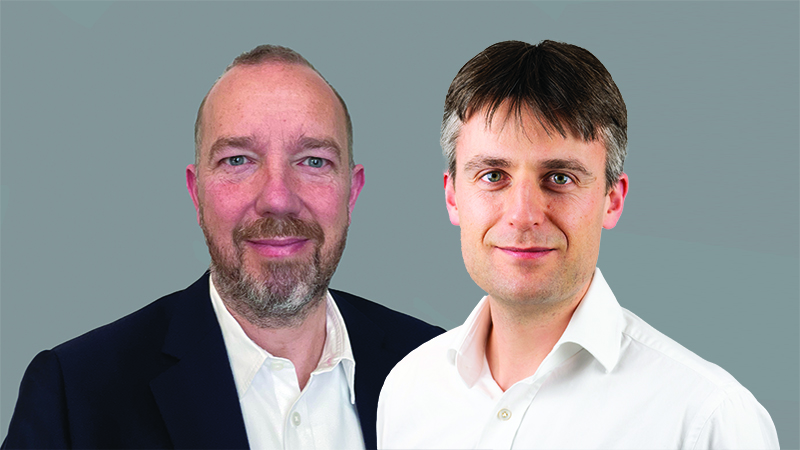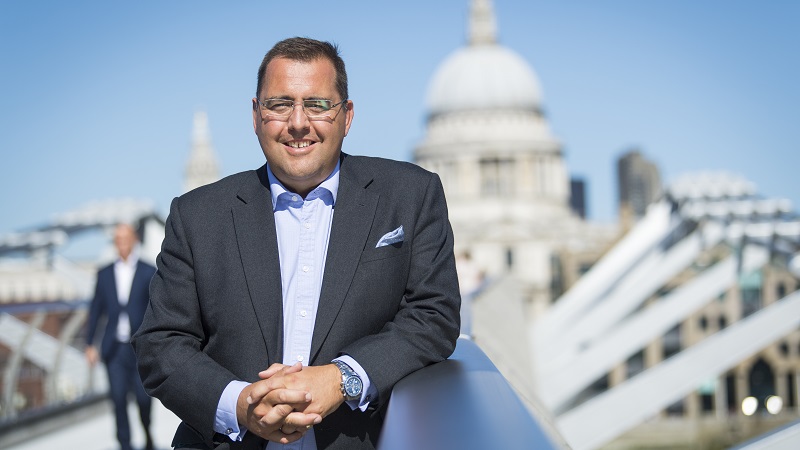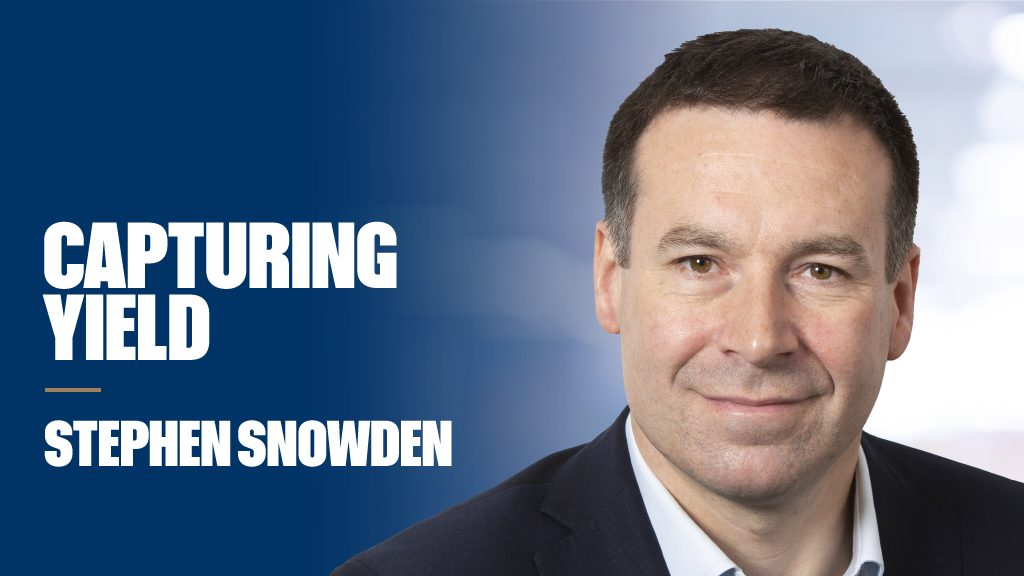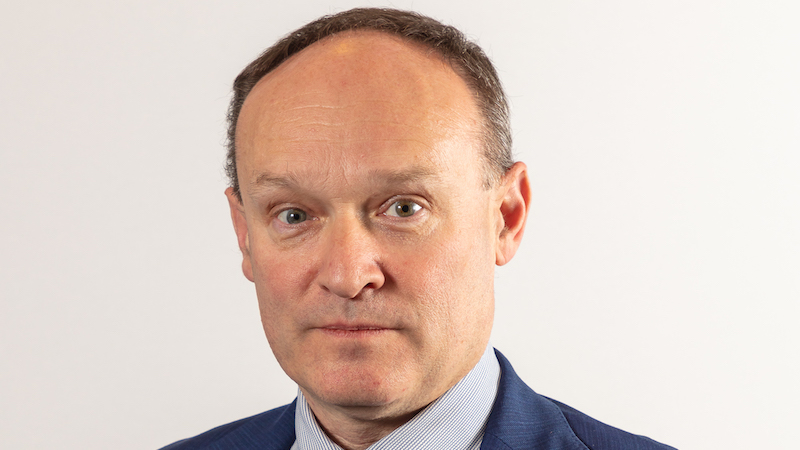Premier Miton multi-asset manager David Jane says basing an investment process on being right all the time is too optimistic. Sure, you may look like a hero, but you could also end up with egg on your face if the market went against you. This is not a route to consistent outperformance. Rather than trying to predict the future, Jane looks to the elements that are in his control: risk, long-term themes and sound portfolio construction.
Jane (pictured) and his partner Anthony Rayner have carved out their multi-asset niche alongside David Hambidge’s multi-manager range since the merger of Premier and Miton in 2019. The duo has just been handed the £595m Multi Asset Growth & Income and £92.6m Multi Asset Conservative Growth funds, adding another £750m-plus to their range.
They will bring their well-established process to the new funds. Devised by Jane in 2010, having left M&G and founded Darwin Investors, this process is based upon a few key philosophical tenets. The first is that funds should be outcome-driven and designed for a purpose.
“If someone wants this risk and reward profile, we’ll give them that with the best investment performance we can manage,” says Jane.
With no fixed allocation to individual asset classes, they need a plan to pare back their vast potential investment universe to a more manageable level.
Unlike many multi-asset managers, the pair do not believe they can predict the future. They are not trying to forecast or say the market is wrong. Neither are they growth or value investors, believing their job is to deliver returns through the cycle. The funds should lean into the prevailing market climate.
This will incorporate all the usual macroeconomic considerations – the state of the economy, interest rates or inflation. According to Jane, this is particularly important for fixed-income investing. It will also include a detailed look at the risks in individual asset classes.
“It is possible to understand the risks in any investment and we believe this is more productive than saying, ‘This stock is £30 and if things go well it could be £60.’ For every investment, we will consider its potential performance in a range of scenarios.”
Incorporating themes
Also guiding the group’s asset allocation is an assessment of long-term themes. This works on the principle that there are a few things about the future it is possible to know: that technology is changing the world, for example, or that demographics are shifting in developed markets.
Says Jane: “Following these themes helps us diversify away from the usual stock-intrade of asset allocation. It means we are buying things with a tailwind. We believe this gives us an advantage. Half of our equities sit in this thematic area and it diversifies the remainder of the portfolio nicely.”
These themes help ensure the portfolio is not set on a binary course, avoiding the hero/idiot path. He says: “We want consistency, to give ourselves the maximum probability of being right. At any one time, we will have eight to 10 different views reflected. We’re not taking an homogenous world view, whereby if we’re right, it’s great and if it’s wrong it’s a disaster. Thematic views tend to be consistent.”
When implementing these views, there are a few considerations. First, he doesn’t buy funds, because they want to have more control over the process. Second, he is focused on liquid investments because when things go wrong, he can sell quickly and easily. He identifies not being able to sell as a key cause of significant losses in difficult market conditions. To pursue an active asset allocation strategy, he needs liquidity.
The products used are generally straightforward. Jane says: “We don’t look at highly leveraged investments or hedge funds; there’s no ‘funny money’. We want our strategy and process to be understandable for IFAs and easy for them to explain to their clients.” He believes the investment industry is too fond of complicated and ‘clever’ investments, which may only serve to pull the wool over investors’ eyes.
A hierarchy of risk
The universe is full of potential investments for equities, fixed income, property and commodities, but importantly he is not a stockpicker, believing it adds the least value to a portfolio.
The level of equity in a portfolio will be the biggest decision, the source of greatest volatility and the driver of returns. Then there is the duration of the bond portfolio and below that, there is the sector and geographic mix within the equity holdings. Is an investor holding technology, for example?
“Then, a long way below that, is which individual equities you pick. We don’t believe you can outperform with stockpicking alone and no asset allocation plan. Even if you pick the best UK equities, you’ll struggle to outperform if the sector is having a bad run.
“As such, we believe it’s better to devote our time to asset allocation, portfolio construction and risk,” he says. Jane and Rayner tend to buy baskets of stocks that give them the exposure they want.
When they are buying an investment, they like to see existing momentum. “We don’t want something that’s going to come good eventually. We don’t believe you can outperform without positive momentum in a portfolio,” says Jane. “For that, the majority of stocks need to outperform. You can’t use a ‘bottom-fishing’ strategy.” This has the added advantage of taking out behavioural biases in stock selection. It is a dispassionate approach, he says.
On portfolio construction, the team looks at a range of scenarios. What are the risks when they do badly? It is about having a plan. What happens when that goes wrong? They scale their ideas equally: “You don’t know what your best idea will be, even if you think you do. This means we’re not outperforming because of a clearer insight into the future, but because of our investment discipline. This means the outcomes are more consistent.”
Pragmatic about recovery
The funds had a good run in 2020. Cautious Multi-Asset is comfortably ahead of its sector over one, three and five years, up by 31.4% over the latter timeframe compared with the IA Mixed Investment 20-60% Shares average of 27.5%.
The managers repositioned in November when they saw the 10-year bond yield trending higher, shifting into retail and financials, and increasing duration.
Their thematic approach had led them towards technology and renewables, both of which had a good year. They cut back on renewables as prices became overheated but retain a strong weighting in digital technology areas.
They have also been adding to medical technology more recently: “Governments need to decrease the cost of healthcare through the use of data. In the whole technology revolution, healthcare has never taken off and it should be massive. From largescale genetic data, you can predict the type of people that will respond to which treatments.”
The other big theme is agriculture and food. According to Jane: “Food price inflation is going to be a thing. Functional foods are also growing as a sector. At its simplest level, this is probiotics, but there is lots going on – food that makes you smarter, thinner, healthier.”
From here the recovery is tough to call. The year-on-year comparisons will slowly start to look less encouraging. Equally, Jane believes government spending is likely to crowd out other parts of the market, reduce productivity and overall growth. This should keep bond yields low.
Inflation is another consideration: “What is going to happen to inflation in a crowding out scenario? There are also tighter supply chains. What happens to wages when people start to go back to work?”
“You might get a scenario with lower growth, higher inflation and low bond yields. Central banks are now buying the whole issuance and we have strongly negative real interest rates. That will be a constraint on growth.
“As such, we want to hold inflation hedges – gold, materials, real assets. It’s also possible to retain exposure to growth assets because they’re not going to get devalued.”
As always, the managers are keeping a balance of risks across the portfolios. They work hard at being right but are realistic that it doesn’t always work out that way. This pragmatic approach is designed to deliver throughout the cycle, whatever the global economy throws out next.
This article is from the September issue of Portfolio Adviser magazine. Read more here.











